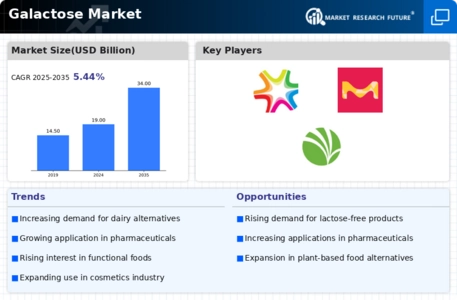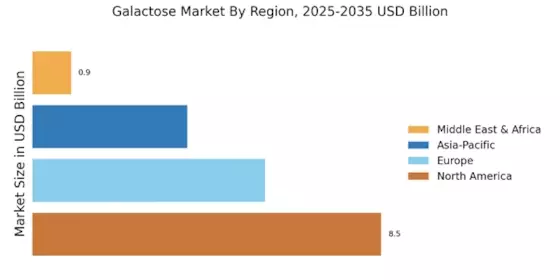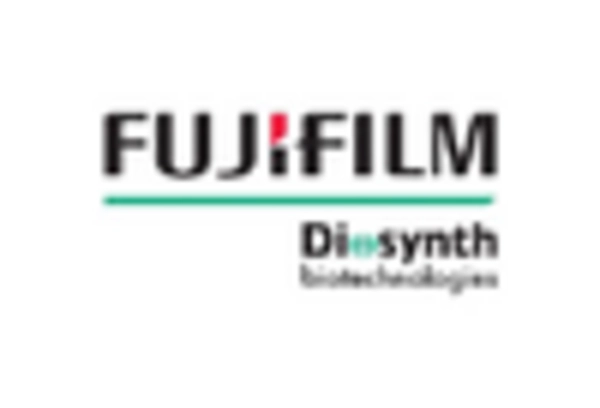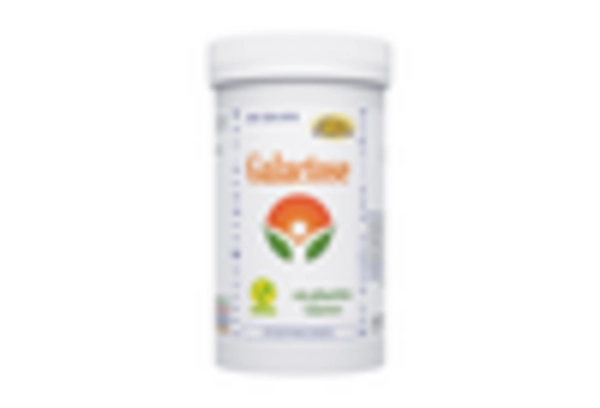Expansion in Nutraceutical Applications
The Galactose Market is witnessing an expansion in its applications within the nutraceutical sector. As consumers increasingly seek functional foods that offer health benefits, galactose is being recognized for its potential role in enhancing gut health and supporting immune function. Research suggests that galactose may promote the growth of beneficial gut bacteria, thereby contributing to overall digestive health. This trend is reflected in the rising number of nutraceutical products incorporating galactose as a key ingredient. Market analysts project that the nutraceutical segment will account for a substantial share of the galactose market, with an expected growth rate of around 7% annually. This expansion indicates a promising future for the Galactose Market as it aligns with the broader trend of health-oriented consumer choices.
Increasing Demand for Natural Sweeteners
The Galactose Market is experiencing a notable shift towards natural sweeteners as consumers become more health-conscious. This trend is driven by a growing awareness of the adverse effects of artificial sweeteners, leading to a preference for naturally derived alternatives. Galactose Market, being a monosaccharide found in dairy products and certain fruits, is gaining traction among manufacturers seeking to cater to this demand. Market data indicates that the natural sweetener segment is projected to grow at a compound annual growth rate of approximately 6% over the next five years. This growth is likely to be fueled by the rising popularity of clean label products, which emphasize transparency and natural ingredients. Consequently, the Galactose Market stands to benefit significantly from this evolving consumer preference.
Growing Interest in Personalized Nutrition
The Galactose Market is experiencing a surge in interest surrounding personalized nutrition. As consumers become more aware of their unique dietary needs, there is a growing demand for tailored nutritional solutions that incorporate specific ingredients like galactose. This monosaccharide is being recognized for its potential benefits in personalized dietary plans, particularly for individuals with specific health conditions such as lactose intolerance or metabolic disorders. Market trends indicate that the personalized nutrition segment is poised for rapid growth, with projections suggesting an increase of around 8% annually. This trend presents a unique opportunity for the Galactose Market to innovate and develop products that cater to the specific needs of consumers, thereby enhancing market penetration and consumer engagement.
Rising Demand in the Food and Beverage Sector
The Galactose Market is significantly influenced by the rising demand for galactose in the food and beverage sector. As manufacturers strive to create healthier products, galactose is increasingly utilized as a sugar substitute due to its lower glycemic index compared to traditional sugars. This shift is particularly evident in the production of dairy products, where galactose is naturally present and can enhance flavor without compromising health. Market data reveals that the food and beverage segment is expected to grow at a rate of approximately 5% over the next few years, driven by the increasing consumer preference for low-calorie and low-sugar options. This trend positions the Galactose Market favorably, as it aligns with the evolving landscape of consumer dietary preferences.
Technological Innovations in Production Processes
The Galactose Market is benefiting from technological innovations that enhance production processes. Advances in enzymatic processes and fermentation technology are enabling manufacturers to produce galactose more efficiently and sustainably. These innovations not only reduce production costs but also improve the purity and quality of the final product. As a result, companies are better positioned to meet the growing demand for high-quality galactose in various applications, including pharmaceuticals and food products. Furthermore, the implementation of these technologies is likely to lead to a more environmentally friendly production approach, aligning with the increasing emphasis on sustainability in the industry. This technological evolution is expected to drive growth in the Galactose Market, as it enhances competitiveness and product offerings.


















Leave a Comment